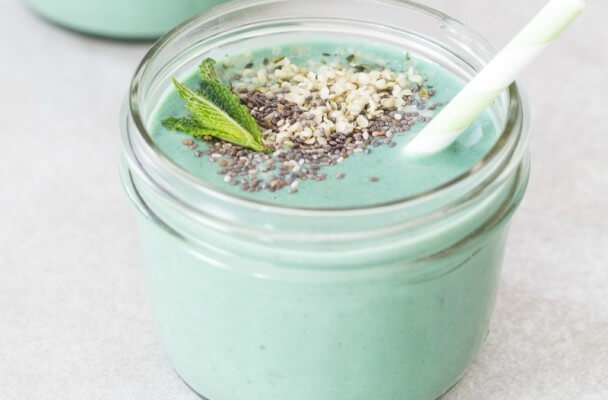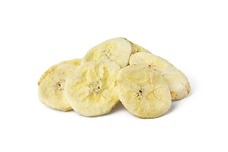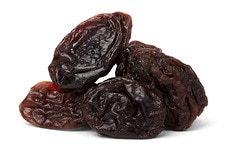Potassium
Potassium is an element represented by the symbol “K” on the periodic table. Technically considered an alkali metal, potassium has very similar chemical properties to sodium. However, they have very different effects in the human body. Understanding the physiological role of potassium can motivate you to get enough of this beneficial nutrient in your diet.
What Is Potassium?
Potassium is a dietary mineral that acts as an electrolyte in the body. Electrolytes dissociate into charged particles, or ions, when they are in a solution. This means that potassium carries an electrical charge, making it important for activities such as muscle contraction and maintaining pH balance (Martin, 2015). The body regulates potassium levels very carefully by shifting potassium in and out of cells because too much potassium (hyperkalemia) or too little calcium (hypokalemia) can cause serious health problems (Palmer, 2014).
Physiological Role of Potassium
Potassium plays dozens of roles throughout the body. One of its most important roles is maintaining a cell’s membrane potential. A cell’s membrane potential refers to its electrical and chemical properties that form the basis for muscle contraction, nerve cell signalling, and heart functioning (Lin, 2010). A special membrane pump called the sodium potassium pump pulls two potassium ions into the cell for every three sodium ions pushed out of the cell. This process maintains the membrane potential, sustaining a cell’s life.
Because of this critical role for potassium, failure to get enough of this mineral is associated with several diseases. Low potassium intake may contribute to risk for osteoporosis, cardiovascular disease, stroke, kidney stones, and high blood pressure (Lin, 2010).
Recommended Daily Intake of Potassium
The Food and Nutrition Center of the Institute of Medicine sets target guidelines for Americans’ daily intake of potassium. Healthy men and women should aim to get 4,700 milligrams of potassium each day (Chen, 2014). For breastfeeding women, this target rises to 5,100 milligrams daily. It’s also important to note that those with kidney problems may need to be on a potassium restricted diet and would work with their doctor and registered dietitian on an eating plan that is right for them (Chen, 2014).
The average daily potassium intake is just 2,640 mg, significantly lower than the recommended target of 4,700 mg (Hoy & Goldman, 2012). Research suggests that intake of potassium can reduce the adverse effects of high sodium intake on blood pressure and that a low potassium intake may be one factor that contributes to the development of high blood pressure.
Low potassium levels is a condition called hypokalemia. Some causes of hypokalemia include: diuretics (water pills) to treat high blood pressure or heart failure, excessive laxative intake, severe or prolonged vomiting and diarrhea, certain kidney or adrenal gland disorders.. Hypokalemia may lead to muscle weakness, intestinal problems, abdominal pain, fatigue, and abnormal heartbeat.
Although it is possible to get too much potassium, a condition known as hyperkalemia, this is typically only seen in people with kidney failure or hormonal problems (Lin, 2010).
Recipes with Potassium
These recipes contain 20% or more of the Daily Value (DV) for potassium and the snacks below are also scrumptious sources of the mineral. If you would like to see a more robust list of snacks and recipes with potassium, be sure to visit our Food and Snack Sources of Potassium page.

Kale Quinoa Salad Recipe
For a salad that is suitable for lunch or supper, this blend of hearty quinoa and crisp veggies supplies a stellar blend of foods that are both nutritious and delicious. Each serving of the salad supplies protein, fiber, and 22% of the DV for potassium.
Ingredients: Quinoa, fresh baby kale, purple cabbage, carrots, fresh dill, boiled eggs, rice wine, extra virgin olive oil, black pepper.
Total Time: 25 minutes
| Yield: 8 servings

Protein-Packed Detox Smoothie Recipe {vegan}
Skipping a meal can be detrimental to your diet, but a protein smoothie serves up a simple way to get the nutrients you need with minimal preparation time. This incredible concoction serves up 20% of the DV for potassium and more than 30% of the DV for iron, calcium and vitamin A.
Ingredients: Almond milk, frozen banana, spirulina, hemp protein powder (optional), fresh mint, chia seeds, hemp hearts.
Total Time: 5 minutes
| Yield: 2 servings
Food & Snack Sources of Potassium
For a more robust repository of foods containing the mineral, check out our page that delves into the food & snack sources of the mineral.
Healthy Eating
- Healthy Snacks
- Healthy Highlights
- 5 Uses for Cacao Powder
- 5 Ways to Eat Farro
- 6 Best Gluten-Free Foods
- Alcohol and the Body
- Almond Flour Recipes
- Anti-Aging Superfoods
- Beat the Afternoon Slump
- Benefits of a Plant-Based Diet
- Benefits of Baobab
- Benefits of Cashews
- Benefits of Coconut Oil for Hair
- Benefits of Coconuts
- Benefits of Dates
- Benefits of Fenugreek
- Benefits of Garcinia Cambogia
- Benefits of Goji Berries
- Benefits of Kale Chips
- Benefits of Monk Fruit Sweetener
- Benefits of Peanuts
- Benefits of Pecans
- Benefits of Pistachios
- Benefits of Pumpkin Seeds
- Benefits of Spelt Flour
- Benefits of Steel Cut Oats
- Benefits of Sunflower Seeds
- Benefits of Tiger Nuts
- Benefits of Turmeric
- Benefits of Walnuts
- Benefits of Wheatgrass
- Best Food Fads
- Cacao vs Cocoa
- Caffeine-Free Energy Foods
- Chocolate That's Good for You
- Diet vs. Exercise
- Fat Burning Foods
- Food Myths Debunked
- Foods for Bone Density
- Foods for Colon Health
- Foods for Healthy Hair
- Foods for Healthy Skin
- Foods to Help Sleep
- Foods to Reduce Stress
- Green Tea Benefits
- Healthy Baking Flours
- Heart Healthy Habits
- High Protein Health Risks
- How to Boost Your Metabolism
- How to Lose Weight While Aging
- How to Throw a Vegan BBQ
- Kaniwa vs Quinoa
- Little Health Foods
- Low-Carb: Fad or Friend?
- Making Healthier Desserts
- Mediterranean Diet Meal Plan
- Natural Beauty Products
- Nuts for Weight Loss
- Preparing Vegan Meals
- Preventing Muscle Degeneration
- Rare Superfoods
- Reduce Sugar Intake
- Save Time By Going Vegan
- Smarter Snack Swaps
- Smoothie Ingredients
- Soy Protein vs Whey Protein
- Starting a Plant-Based Diet
- Steel Cut vs Rolled Oats
- Sugar Substitutes
- Vegan Proteins
- Vegan Substitutions for Fall Recipes
- Why Go Vegan
- Healthy Meals
- Healthy Recipes
- Sports Nutrition
- Nutrition and Special Diets
- 21 Day Fix
- 5 Popular Diet Similarities
- Alkaline Diet
- Anti-Inflammatory Diet
- Calorie Counting
- Carb Cycling Diet
- Celiac Disease
- Cholesterol
- Clean Eating
- Crohn's Disease
- DASH Diet
- Detox Diet
- Diabetes
- Diabetes Diet
- Diet Pill Dangers
- Fat Burning Foods
- Gluten-free Diet
- Glycemic Index
- Heart Health
- High Blood Pressure Diet
- High Fiber Foods
- How to Eat Healthy
- How to Lower Blood Pressure
- Hypertension
- IBS Diet
- Ketogenic Diet
- Liquid Diet
- Low GI Foods
- Low-Carb Diet and Foods
- Low-Fat High-Carb Diet
- Mediterranean Diet
- Mediterranean Diet Foods
- Military Diet
- Nutrition Labels Explained
- Paleo Diet
- Raw Food Diet
- Superfoods
- Sustainable Weight Loss
- Thrive Diet
- Vegan Diet
- Vegetarian Diet
- Weight Loss Shakes
- Whole30


